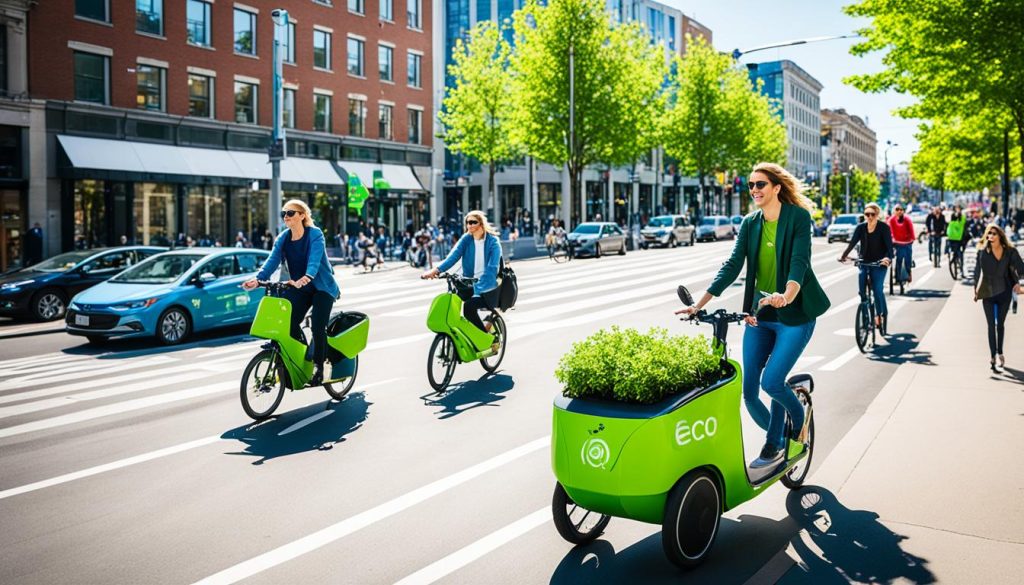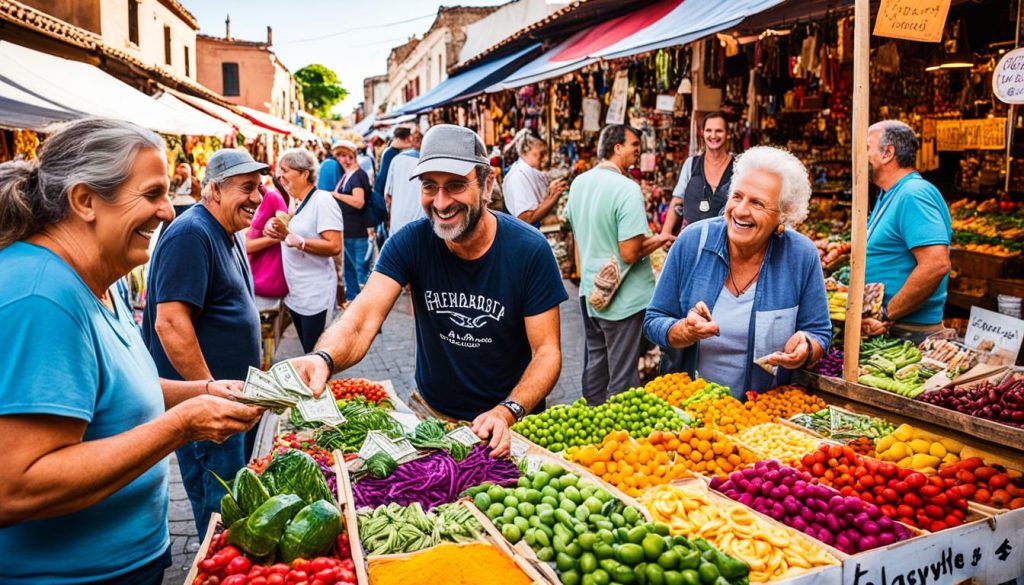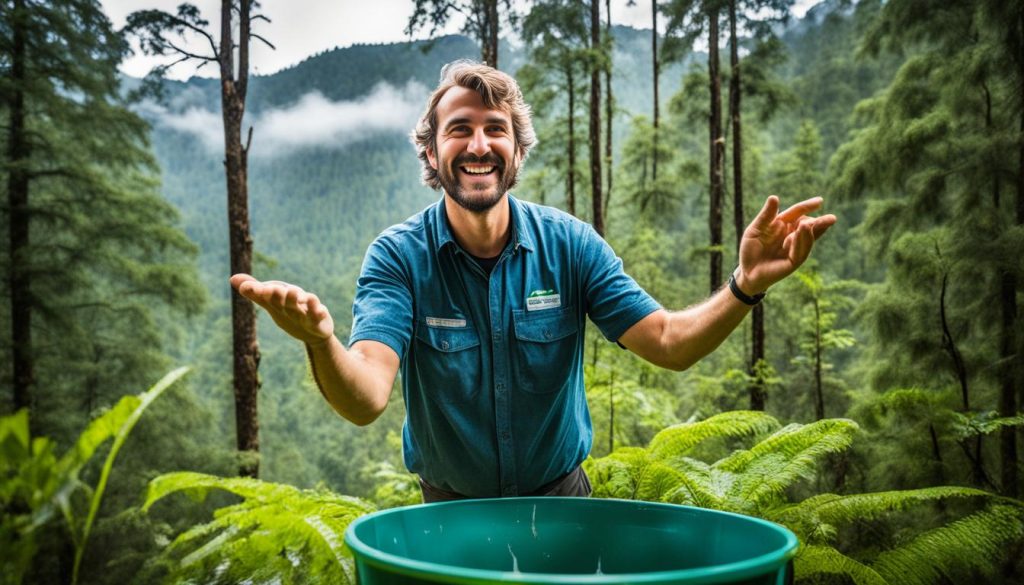Have you ever thought about how your travels affect the planet? The travel industry is growing, making it crucial to use eco-friendly ways to travel. Sustainable travel, or green travel, is key to making sure your trips don’t damage the places and people you visit.
By choosing responsible tourism, you help protect local cultures and support local economies. You also reduce your impact on the environment. This guide will show you how to travel sustainably and make choices that are good for the planet.
Quick Recommendation: U-Pack offers affordable solutions for your unique move by charging only for the equipment space you use. Additionally, fuel costs are always included, making it possible to stay within your budget.https://yazing.com/deals/upack/Agatha85
Key Takeaways
- Understand what sustainable travel means and why it’s important.
- Learn how to research eco-friendly destinations and accommodations.
- Explore various eco-friendly transportation options.
- Find out how supporting local businesses can benefit communities.
- Discover ways to minimize waste and conserve natural resources during your travels.
Understanding Sustainable Travel
Sustainable travel means making choices to lessen your impact on the environment. This includes picking eco-friendly places to stay and choosing transport that cuts down on emissions. Every choice you make matters. Ethical tourism makes sure the culture and economy of your destination are valued and supported, not taken advantage of.
Low-impact travel is key in fighting climate change, saving nature, and helping local communities. Let’s dive into what sustainable travel is and why it’s important.

Quick Recommendation: What if you could buy the same backlinks The HOTH offer, and save up to 75% per order? Do you use The HOTH? Add our links to your SEO campaigns and see your rankings soar. Trusted By 2,500+ SEO's.https://yazing.com/deals/thehoth/Agatha85
What is Sustainable Travel?
Sustainable travel, or sustainable tourism, is about making a good impact on the places you visit. It means reducing waste, saving natural resources, and supporting the local economy. For example, choosing hotels that use green energy or joining community tourism projects.
Ethical tourism is also vital. It promotes fair trade, supports local craftspeople, and respects cultural heritage. By following these ideas, you help make the planet greener.
Why It Matters
Traveling responsibly is crucial today. By picking sustainable tourism, you fight climate change and protect nature. Ethical tourism makes sure your money helps local communities, improving their lives.
Low-impact travel lets you have unique experiences without harming the environment. As a thoughtful traveler, your choices help both nature and the people who live there.
Planning a Sustainable Trip
Planning a trip that’s good for the planet is key. It means thinking about where you go, where you stay, and what you bring. This helps reduce your impact on the environment.
Research Your Destination
Start by learning about the place you’re visiting. Know its environmental issues. This helps you be a responsible traveler by caring for the local nature and culture. Look for advice on how to protect the environment and support conservation.
Choose Eco-friendly Accommodations
Choosing places to stay that are good for the planet makes a big difference. Look for green hotels or eco-lodges. They use less energy, save water, and reduce waste. Make sure they have official green certifications.

Travel Light
Packing lightly is important for a greener trip. Bring only what you really need. Use items that can be used for more than one thing. A lighter bag means fewer emissions from transport. Also, think about using eco-friendly toiletries and avoiding single-use plastics.
Eco-friendly Transportation Options
Choosing eco-friendly transport is key to sustainable travel. Each mode of transport helps lessen environmental harm and promotes a greener world. Let’s look at some top choices for you.
Public Transportation
Using public transport is a great way to cut down on carbon emissions. Buses, trains, and trams carry many people, which means fewer emissions per person than driving alone. By choosing these, you help reduce pollution and traffic, making a big positive change for the planet.
Biking and Walking
Biking and walking are top picks for exploring a new city and supporting sustainable transport. They cut down your carbon footprint and let you take in the sights. Cities are now adding bike-sharing systems, making it simple for travelers to get around without a car.

Carpooling and Ridesharing
Carpooling and eco-friendly rideshare programs are excellent for green travel. Sharing rides saves money and cuts down on the number of cars on the road. This reduces traffic and air pollution. Services like Lyft and Uber offer carpooling, letting you share your trip with others going your way.
Supporting Local Communities
Supporting local communities is key in sustainable travel. It makes your trip better and helps the places you visit. This way, your visit has a good effect on the area.
Shop Local
Shopping at local markets helps the local economy. You can buy handmade crafts, unique souvenirs, or everyday items. This way, your money stays in the community.
Items from local markets travel less and have a smaller carbon footprint. It’s a win-win for you and the environment.

Eat Local
Choosing local produce is tasty and supports local farmers and restaurants. Eating at local places helps the local economy and gives you real local flavors. Plus, you get fresher, healthier food that’s better for the planet.
Conserving Natural Resources
Eco-conscious travel means saving our natural resources. By making simple changes, you can help with water conservation and cut down on waste. These actions make a big difference during your trips.
Saving Water
Water is vital, and saving it is key while traveling. Start by taking shorter showers and reusing towels. Fixing leaks also helps a lot. Choose places to stay that use less water, like low-flow toilets and showers.

Minimizing Waste
To travel eco-consciously, aim to waste less. Use reusable items like water bottles, bags, and utensils to avoid plastics. Also, recycle and compost when you can.
These steps help protect our planet’s resources. They encourage others to join in, making a big difference for a sustainable future.
Wildlife and Nature Conservation
When you start your journey, think about how your actions affect the natural world. Joining ethical wildlife tours is a great way to see animals without hurting them. These tours respect their homes and ways of life.
Visiting conservation efforts in national parks helps protect our planet’s diverse life. These places are safe havens for animals that need our help to survive.
Being kind to wildlife is key to sustainable travel. Always stay away from animals and don’t feed them. Feeding them can change their natural ways and diets.
Choosing to protect biodiversity is important. Pick activities and tour guides that care about the environment. Look for guides who are open about their work and help local conservation projects.
Your choices really do matter. By joining ethical wildlife tours and supporting conservation, you help keep nature safe. This way, we can keep our planet healthy for our kids and grandkids.
Traveling with Minimal Footprint
To truly embrace sustainable travel, it’s key to reduce your environmental impact. Focus on your sustainable footprints and find ways to lessen them. Using carbon offset programs and following Leave No Trace principles are great ways to do this.
Carbon Offset Programs
Carbon offset programs help balance out the emissions from your travel. By supporting projects like renewable energy or reforestation, you lessen your environmental impact. Airlines and travel companies let you buy carbon offsets when you book your trip. This simple action can make a big difference.
Leave No Trace Principles
The Leave No Trace principles aim to prevent environmental harm during your trips. They suggest packing out all trash, reducing campfire effects, and respecting wildlife. By doing this, you ensure your trips don’t harm nature and help keep it safe for others in the future.
Sustainable Travel: How to Explore the World Responsibly
Starting a green journey is more than a trend; it’s a duty. By choosing environmentally responsible traveling, you help our planet and its creatures. This guide offers tips for sustainable travel to help you make better choices.
First, learn about your destination and pick eco-friendly places to stay. Traveling light also helps reduce your carbon footprint and supports sustainability.
How you get around matters too. Use public transport, bike, or walk when you can. Carpooling and ridesharing cut down on emissions. Your choices in transport can greatly reduce your environmental impact.
Supporting local communities is key. Shopping and eating local gives you real experiences and boosts the local economy. It helps keep these communities thriving and their cultures alive.
Saving natural resources is crucial. Use water wisely and try to waste less during your trips. Every small action helps keep our nature beautiful and healthy.
Think about wildlife and nature conservation. Respecting the places you visit means they’ll be there for others in the future. Follow Leave No Trace principles and offset carbon emissions to lessen your travel impact.
With these tips, you’re ready to travel responsibly. Embrace environmentally responsible traveling and let this eco-travel guide guide you on your next adventure.
Conclusion
Sustainable travel means being a responsible explorer. It’s about finding a balance between exploring and protecting our world for the future. By choosing to travel sustainably, you help the planet and support local communities and cultures.
Your choices matter a lot. Picking eco-friendly places to stay and using public transport helps a lot. Every little thing you do, like reducing waste or helping local businesses, makes a big difference. Sustainable travel is key for a healthy future.
We encourage you to travel more responsibly. Respect the world and all its life. Share the idea of sustainable travel with others, encouraging them to join us. Together, we can make a big difference. We can keep our world beautiful and open for everyone in the future.
Quick Recommendation: Internet is not the unrestricted resource that we dream it to be. Online privacy is crucial for a safe browsing experience. Here’s why iProVPN matters: Bypasses government censorship and geo-restrictions, Prevents data theft against hackers, Makes your browsing history anonymous.https://yazing.com/deals/iprovpn/Agatha85

